I have two words for you: wet basement. That’s right. After this fabulous and exciting post of my new and improved basement, literally days later, mother nature gave me a run for my money (see post here). It had to do with a few things that were not working in my favour.
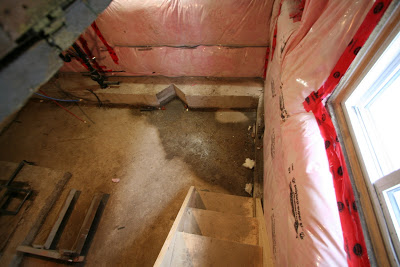 |
| Leak in the old part of the basement. Water is coming in where the footing and earth meet. |
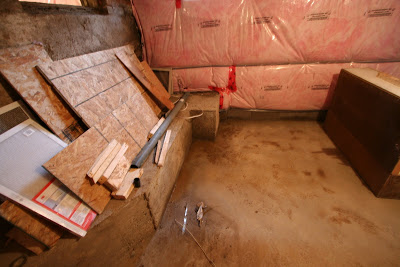 |
| New area where the old and new construction meet. |
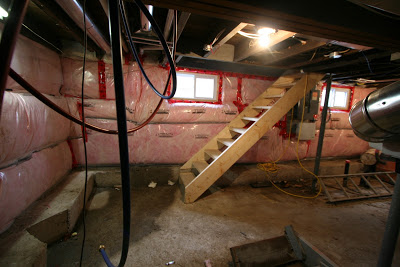 |
| Again, the stair area. And this is after a few days of drying out. |
To start, I was changing over my eaves troughs. They were to be connected to the eaves on the new addition but the new ones arrived much too late. If you are removing your eaves troughs, make sure they are quickly switched and that there isn’t a three day rain forecast ahead. I believe that is a basic tip from Renos for Dummies, but I could be wrong. Apparently, we missed that chapter!
Second was an issue with the old house attaching to the new. As you can imagine, there is a seam where they meet, and a rather large one at that. To connect the old house with the new addition without any issues, the goal is to pin the foundations together and then to apply a layer of tar and waterproofing membrane over top of the seam; This is to avoid the risk of water seeping into the crack. This was done to my house, but the waterproof membrane only overlapped the old house by inches, causing the water to creep around the membrane and right into the house (Again, Reno for Dummies?).
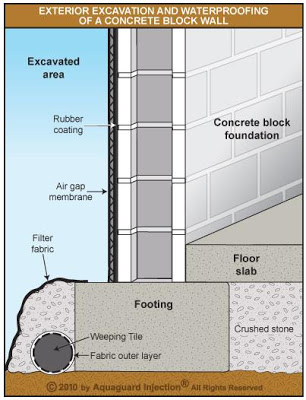 |
| This is the ideal situation/construction of an exterior wall. The rubber coating and the air gap membrane are what water proof your house. via |
Next, our issue was the grading. After making a huge hole in the ground, you wonder where the dirt should go? Well, usually it is transported away, which some of mine was, but not enough. Instead we dispersed the dirt throughout the property to create swells (aka slopes) for the water to run into. Instead, we somehow managed to swell the water right into my house! The grading was making a pillow top which basically invited the water into the house (with open arms!).
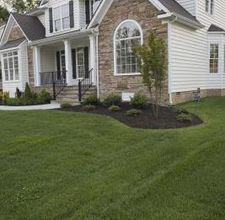 |
| This is an example of a slope AWAY from the house. Rule of thumb is roughly a 5% slope. via |
And for insult to injury, the sump pump wasn’t working correctly. What is a sump pump?
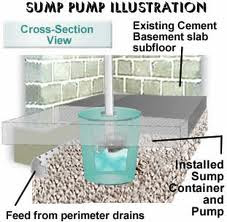 |
| via |
A sump pump is an mechanical pump that helps remove any water that is in surrounding the basement floor. It is attached to the house drain system and is emptied through the same pipes that all the water waste from your home is. It is essential that this pump works. There is a trigger that sets it off when it is full. In my basement, this trigger wasn’t very “trigger happy”. It is now fixed and work well, and loud! I can hear and feel it on the main floor.
So…how did we fix the problems?
We transported two large bins of dirt away. Levelled out the gravel and dirt on the driveway. Added the extra drainage for now. Fixed the sump pump. Cut all the insulation barrier in the basement to air out the insulation to prevent mold. Added new and correct eaves troughs and directed them away from the house. And we dug down beside the house where the new and old seam meet to put a bit of extra tar and membrane for a perfect seal.
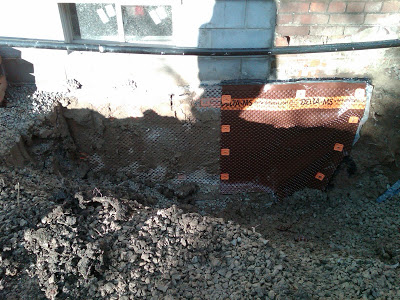 |
| More tar and waterproofing membrane. |
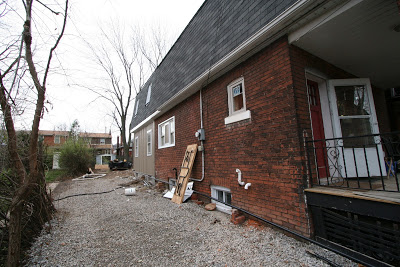
Oh boy, water leaks are no fun! But at least now I know why they actually happen! Thanks for an informative post, Madame Reno 🙂
*Tania @ Passport2Design.com
Waterproofing los angeles
Small bits of content which are explained in details, helps me understand the topic, thank you!